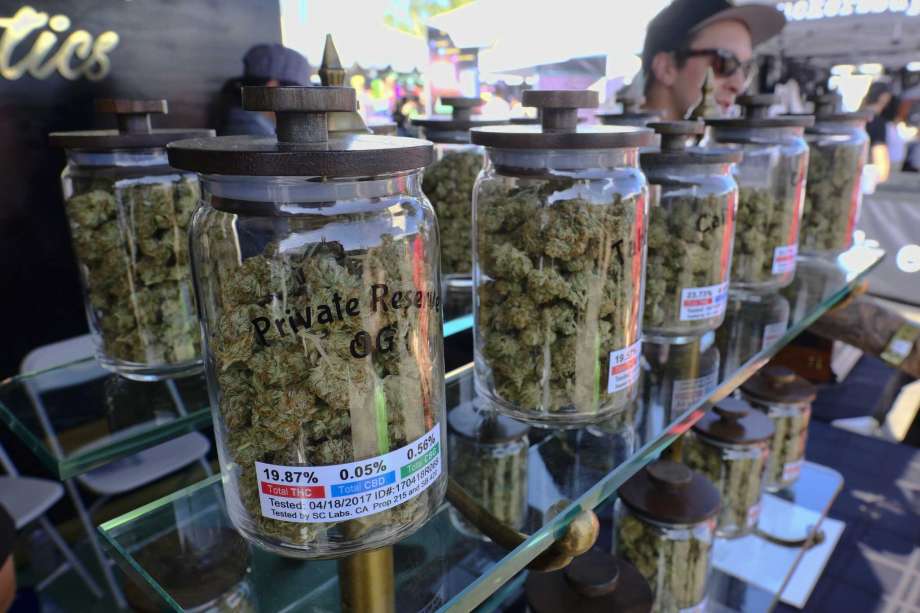It takes a lot of juice to grow pot indoors, so Sacramento’s major electric utility is gearing up for the heavy demands of recreational marijuana growers come January.
That’s when growing cannabis for non-medical purposes becomes legal in California, though cities and counties retain some control.
Sacramento city officials have moved quickly to welcome the new industry by accepting dozens of applications and issuing permits for pot farms in warehouses citywide.
The Sacramento Municipal Utility District is getting ready, too, by doing research it hopes will conserve energy and reduce the load on aging infrastructure. SMUD researchers are testing LED lighting and air-conditioning systems in cooperation with the city’s current crop of legal, medical pot producers.
Recreational marijuana is just “another commercial industry for us,” said Matthew McGregor, a SMUD project manager who’s been assigned full-time to work with cannabis cultivators. “We saw a data-center rush a few years ago. It’s a similar experience.”
Like data centers, growing cannabis indoors is an energy-intensive enterprise.
A report issued by the state Public Utilities Commission earlier this year said that legal, indoor medical cannabis cultivation was responsible for about 3 percent of California’s electricity consumption – the same as a million homes.
That figure was from 2012, years before voters legalized recreational marijuana through Proposition 64 last November. The ballot measure takes effect at the start of 2018, and many individuals and companies are scrambling to profit from the change or cope with its downsides.
One effect, already evident, is that sale prices and rents for warehouses in some areas of Sacramento have soared as growers compete to find suitable spaces and win city approval.
The city is a magnet for cannabis growers because it moved the fastest, among the state’s large urban areas, to establish a legal framework for the growers’ operations while making plans to collect fees and taxes from them.
SMUD officials see potential benefits and drawbacks to the city’s embrace of pot planters.
The industry promises to be a lucrative source of income for the public utility, using far more electricity than the traditional occupants of warehouse spaces. SMUD spokesman Christopher Capra said the new revenues could “put downward pressure on rates” for homeowners and other SMUD customers.
The increased demand, however, could tax some of SMUD’s older substations and electric lines, requiring costly upgrades.
“Growers are locating operations in areas where SMUD’s infrastructure was designed for lower energy use,” Jim Parks, a SMUD energy researcher, wrote in an email. “For example, a warehouse facility may use between 5 and 10 watts per square foot. Grow facilities use between 60 to 80 watts per square foot on average.”
That’s why SMUD is working with growers to compare low-wattage LED lighting to the high-pressure sodium lights, similar to street lamps, that cultivators traditionally prefer.
“LED lighting typically reduces the lighting electrical load by around 40 percent,” Parks said. “At the end of a grow cycle, we will compare the energy use and other factors to ensure that LED lighting systems are a viable alternative to the energy intensive (sodium lamps).”
Results of the tests are expected by the end of this year or in the early part of 2018, researchers said.
Hezekiah Allen, executive director of the California Growers Association, said cannabis cultivators welcome collaborative research projects such as those proffered by SMUD – but have their own way of doings things.
It’s true, for example, that LED lighting saves energy, but it doesn’t produce as much pot as high-pressure sodium lighting, he said. One option is to use LED lighting through part of a crop’s growth cycle and then switch to sodium lights, he said.
“We’re certainly stoked that they’re doing research, but the industry’s pretty well-versed in LED technology and has a low degree of confidence in it,” he said. “It’s been demonstrated the technology doesn’t work quite as well for the whole life cycle of the plant, but using LED part of the time could be a huge (energy) reduction.”
Allen said the bigger concern is the potential to overload electrical grids by drawing down large amounts of power.
“It’s something I’m concerned that our growers are not concerned enough about,” he said. “Fitting into the existing power grid is very critical to growers’ success.”
As recreational pot becomes legal, many growers will move from smaller operations to large-scale production and may not understand the impact of their operations on substations and other parts of the grid, he said.
“Folks are upgrading from 5,000 square feet to 100,000 square feet,” he said. “That’s a huge jump, and you can’t just take for granted that the grid is going to support what you’re doing anymore.”
Allen said it’s good that SMUD employees are thinking proactively about the issue. “That’s where SMUD is really shining here,” he said.
During the last five years there’s been a lot of discussion throughout the state about water consumption and contamination by cannabis growers, Allen said.
“I think during the next five years, we’re going to see a lot of conversations about the energy impacts of the industry,” he said.
credit:420intel.com













